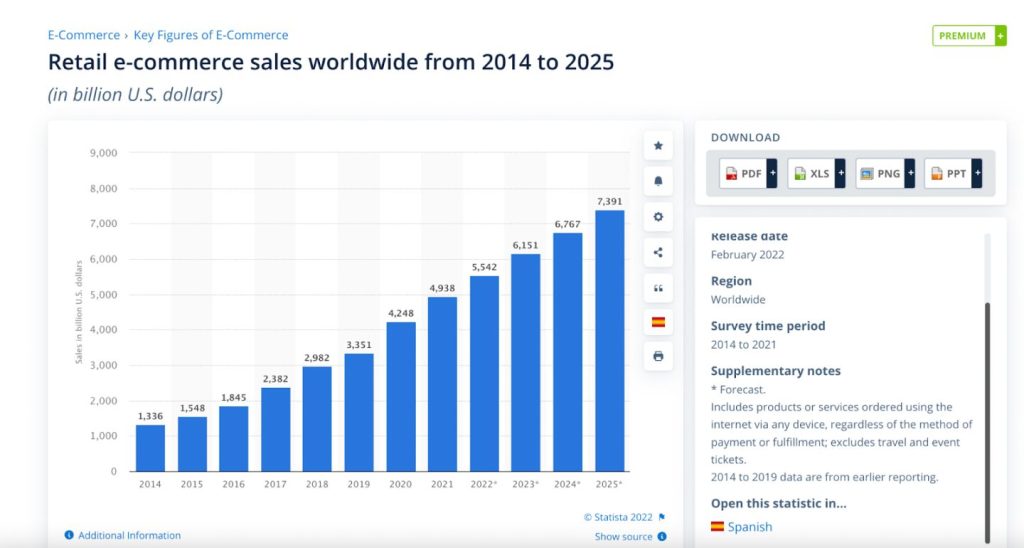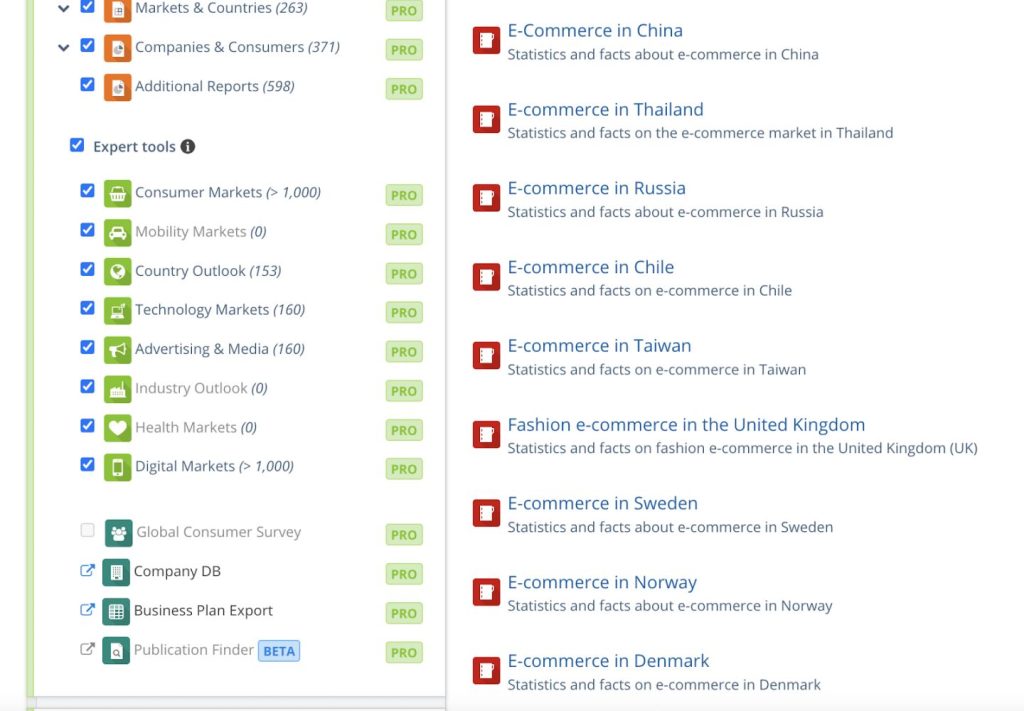Address
304 North Cardinal St.
Dorchester Center, MA 02124
Work Hours
Monday to Friday: 7AM - 7PM
Weekend: 10AM - 5PM
Address
304 North Cardinal St.
Dorchester Center, MA 02124
Work Hours
Monday to Friday: 7AM - 7PM
Weekend: 10AM - 5PM

It has come to March 2022. After another year in the e-commerce industry, a common topic has once again been pushed to a new peak: Is it still suitable for e-commerce in 2022?
This time, I have compiled some effective data to tell you the new trend of e-commerce in 2022.
According to the latest e-commerce-related data report released by statista, e-commerce sales in 2021 will reach $493.8 billion, an increase of 16.24% compared to 2020. And the data provided by statista predicts that the sales of the e-commerce industry will continue to increase until 2025, which will double compared to now.

Since 2014, e-commerce has begun to show signs of dividends. In 2016, it ushered in the first small growth peak. Later, the epidemic broke out at the end of 2019. Not only did the new crown not restrict the development of e-commerce, but it has greatly improved in 2020. . The epidemic has directly promoted the development of e-commerce shopping.
With the development of the cross-border e-commerce industry, the competition in some traditional hot fields has become more and more fierce, and the industry has become more and more introverted. So, is there still a blue ocean worth deploying for cross-border e-commerce? Among the top five Chinese cross-border e-commerce retail export destinations, three markets are located in Southeast Asia, a hot blue ocean market. Under the background of the vigorous development of domestic cross-border e-commerce, overseas Southeast Asia has entered an unprecedented golden age. The advantages of a better environment, policy support, and similar culture have brought together overseas business opportunities in Southeast Asia.
From the perspective of trade environment, ASEAN has become China’s largest trading partner, Southeast Asia is the first stop of the “21st Century Maritime Silk Road”, and the China-ASEAN Free Trade Area has been fully completed in ten years. According to data from the General Administration of Customs, in 2020, ASEAN will be China’s largest trading partner, creating new opportunities for Chinese companies to go overseas.

From the perspective of policy orientation, cross-border e-commerce has become a new form of foreign trade. In 2020, the State Council expanded the number of cross-border e-commerce comprehensive pilot zones to 105, and the General Administration of Customs added cross-border e-commerce B2B and overseas warehouse export supervision codes to improve customs clearance. From the perspective of regional culture, domestic products are becoming popular in Southeast Asia with the characteristics of high quality and low price. Southeast Asia and China are geographically close and have similar cultural preferences. Domestic products have a natural advantage in going overseas. Taking the Malaysian market as an example, over 60% of cross-border shopping comes from China. In addition, the rapidly developing Latin American market is also worthy of attention.
E-commerce in Latin America has grown rapidly in recent years. The total online shopping population exceeded 267 million, accounting for 45% of the total population in Latin America. It is expected that by 2024, this number will exceed 350 million, and the economic development of e-commerce will also usher in a blowout. Latin America, which is running at a high speed, can be said to be a blue ocean market for cross-border e-commerce. More and more big sellers are starting to deploy in the Latin American market. If you want to get a piece of the pie, you should know about the Latin American platforms in advance.
Half is sea water, half is fireworks, this is the best expression of today’s cross-border e-commerce industry. When you are still worried that cross-border e-commerce is not easy to do, and you are still hesitating whether to enter the game or not, they have already chosen a new path. The size and size of the market covered by an e-commerce platform can determine how large the platform can grow in the future. So far, Shopee has covered more than ten markets including Singapore, Malaysia, the Philippines, Thailand, Vietnam, Brazil, Mexico, Colombia, and Chile.

As an e-commerce platform, Shopee officially launched in 2015. After five years of development, it has achieved remarkable results. Shopee’s parent company, Sea, is a Singaporean Internet giant and has been working in Southeast Asia for more than 10 years. Localization is the core competitiveness of Shopee in the Southeast Asian market. From the data point of view, Shopee also has a huge traffic advantage in the Southeast Asian market. In 2020, Shopee won the third place in the global shopping APP downloads, and was selected as the No. 1 in Asia Pacific and the top ten in the world in the YouGov 2020 Brand List, a global authoritative market research organization. In the selection list of six markets in Southeast Asia, Shopee All are on the list.
Therefore, 2022 is still a year of vigorous development of e-commerce, but at this time you need to work harder to obtain better results.